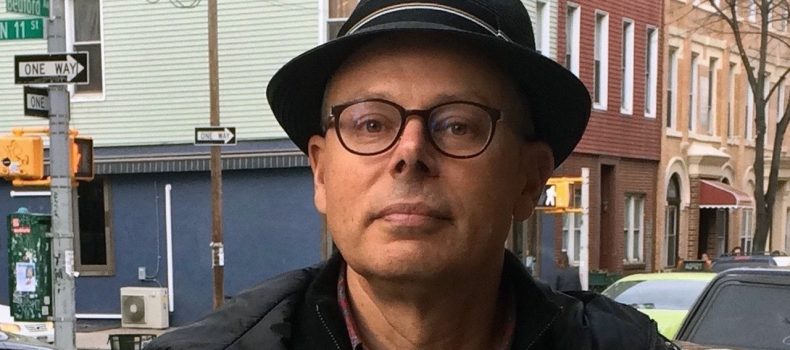Q&A: This composer hits the right notes on gun violence
Musical scores for 250 hours of network television and a melodic tribute to California are among Ron Ramin’s accomplishments. Ramin, 65, lives in Mill Valley and is now composing an orchestral work he hopes will inspire multigenerational conversations about gun violence in America.
J.: “Seventeen” is your work in progress, which chronicles the emergence of student protests in reaction to the proliferation of school shootings. What is the significance of the title?
Ron Ramin: Seventeen is the number of lives lost at Marjory Stoneman Douglas High School in Parkland, Florida, and also the number of the injured. Plus, it’s the age when most kids are on the cusp of taking on the responsibilities and privileges of becoming an adult. I’m extremely energized by these kids who are speaking up, saying, “No more.”
J.: How would you describe the piece?
RR: I’m composing a work for orchestra that will include student narrators and multimedia projection that convey the energy and flow of American teenage life brought a halt by gun violence in schools. Panels to guide group discussions will also be part of it.
J.: What are your hopes for “Seventeen”?
RR: I’m interested in using art as a way to unite rather than divide people, and I hope this work will bring people of all ages and different points of view together in communities everywhere.
J.: You also have used art to interpret the allure of California. “Golden State of Mind,” your three-part orchestral work, pays tribute to Yosemite National Park, the San Andreas Fault and Olvera Street in Los Angeles. How did this work originate?
RR: Originally it was just one movement called “Greetings!” written about how California and Yosemite enthrall people from all over the world. The Marin Symphony performed it in 2014 at its annual outdoor concert. Since then, I expanded it to three movements.
J.: You describe the “Olvera Street” movement as “a joyous musical celebration featuring exuberant Latin percussion.” The “Yosemite” section is filled with soaring passages. The “San Andreas” movement is darker.
RR: It’s the flip side of the California dream. It’s not just about earthquakes so much as the different kinds of devastation possible here, including drought, fires, floods and mudslides. As great as it is to be in California, these are things we have to deal with.
J.: You began your career as a film composer, ultimately scoring 20 prime-time television series and more than 30 made-for television movies. What was that work like?
RR: Many people go from composing for the concert hall to composing for film, and I did the opposite, because I wanted to return to my first love — music in concert form, where everyone pays attention to every note you write. In film, music hides under dialogue or the sounds of explosions or helicopters.
J.: You grew up in New York and became bar mitzvah at the Forest Hills Jewish Center in Queens in 1966. Sid Ramin, your dad, orchestrated many television, film and theatrical productions and collaborated with Leonard Bernstein on “West Side Story.” So did you choose composing, or did it choose you?
RR: I started playing piano at 7, and I was pretty good, but in college I had no intention of majoring in music. I was studying politics, international affairs and public policy. One semester I didn’t take a music class, and I was miserable. While studying for a microeconomics exam one night my sophomore year, I called my father and told him, “I think music is my life.”
J.: You say some concerts are good venues for cross-pollination, where people who might not otherwise listen to Brahms or Mendelsohn can come hear these composers. Any examples?
RR: I just went to a concert by the California Symphony of composer John Williams’ works. In New York, I saw “Fire in My Mouth” with the New York Philharmonic, about the Triangle Shirtwaist Factory fire of 1911 that killed more than 100 young immigrants. And at Cal Performances, I saw “Dreamers,” which tells stories about immigrant communities. Many orchestras are programming these bolder, innovative works that may have social impact.
J.: And that’s a good thing?
RR: Music should move people in all kinds of ways. If art is done well, it can make a difference. That’s what I am trying to do.

